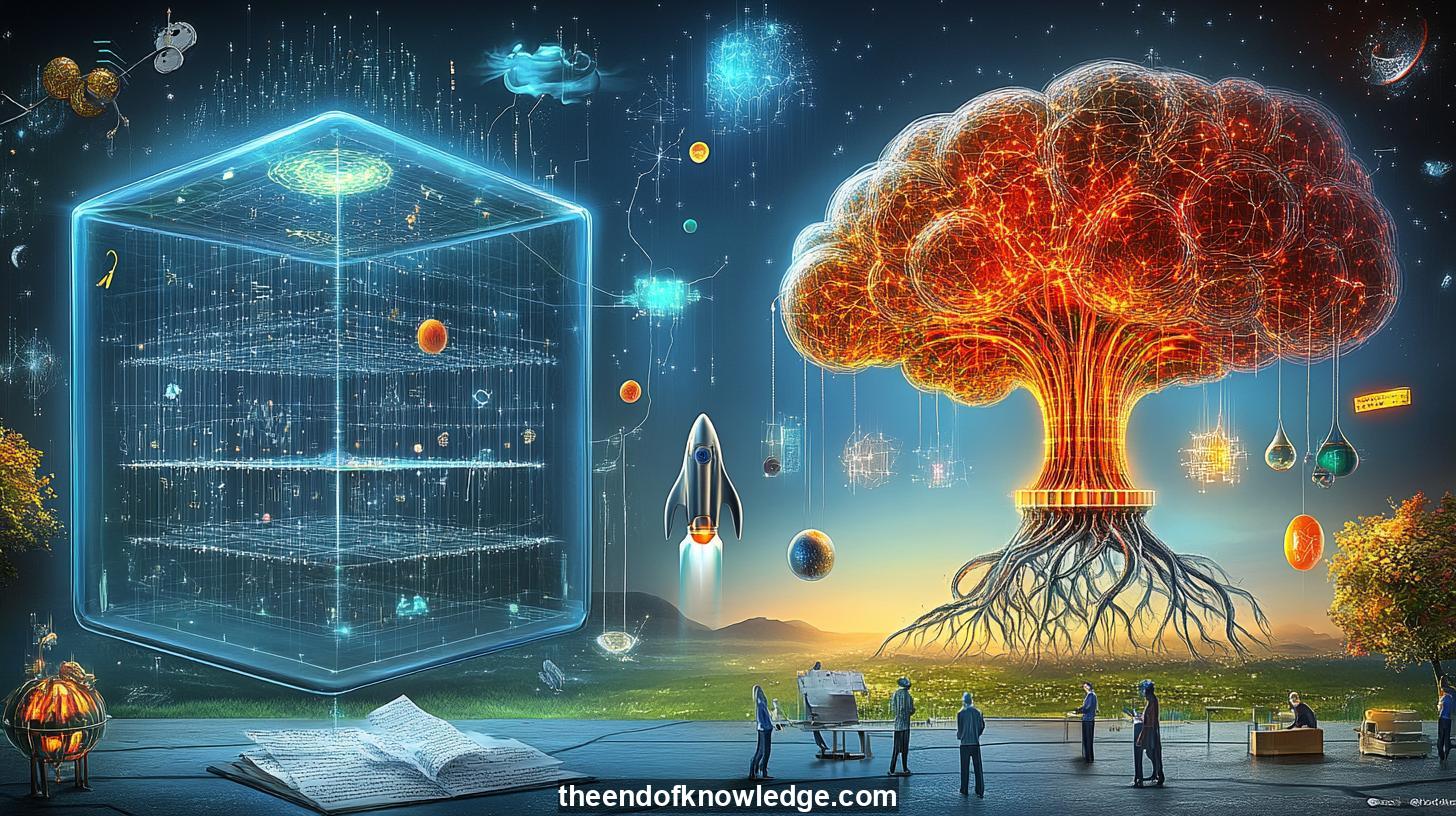 >
>
Concept Graph, Resume & KeyIdeas using DeepSeek R1 :
Resume:
explores the transformative impact of transformer technology on the field of artificial intelligence, highlighting its revolutionary potential and applications across various domains. It begins by discussing how transformers, introduced in 2017, have become a cornerstone of modern AI, particularly in natural language processing. The technology's ability to handle sequential data through self-attention mechanisms has made it highly effective for tasks like translation, text generation, and predictive modeling. also delves into the biological inspiration behind transformers, drawing parallels with the human brain's hippocampal formation and its role in memory and learning.30 Key Ideas:
1.- Transformers, introduced in 2017, have revolutionized artificial intelligence, particularly in natural language processing.
2.- The self-attention mechanism allows transformers to weigh different parts of the input, enabling efficient processing of sequential data.
3.- Transformers have been successfully applied in tasks such as translation, text generation, and predictive modeling.
4.- The technology draws inspiration from biological processes, such as the hippocampal formation in the human brain.
5.- Transformers offer a degree of transparency through their attention mechanisms, making them more interpretable than traditional neural networks.
6.- Interpretability is crucial for building trust in AI systems and improving model performance.
7.- Transformers address overfitting by learning contextual relationships rather than mere statistical correlations.
8.- The potential of transformers extends beyond AI, with applications in neuroscience and education.
9.- Insights from transformer models could inform new approaches to human learning and memory.
10.- Ethical considerations are paramount in the widespread adoption of transformer models.
11.- Responsible innovation is necessary to ensure that transformer technologies benefit society.
12.- Interdisciplinary collaboration is essential to fully realize the potential of transformer technology.
13.- Further research is needed into the theoretical foundations of transformers and their applications.
14.- The scientific community must explore both the technical and ethical dimensions of transformer technology.
15.- Transformers have the potential to transform multiple fields, from linguistics to cognitive science.
16.- The mechanism of attention in transformers is analogous to human cognitive processes.
17.- Transformers enable machines to learn complex patterns in data, similar to human learning.
18.- The technology has the potential to revolutionize how we approach problem-solving in AI.
19.- Transformers are being used in generative models, such as those for image and text generation.
20.- The scalability of transformers makes them suitable for large-scale applications.
21.- Transformers have outperformed traditional models in various benchmarks and competitions.
22.- The integration of transformers with other AI technologies could lead to even more advanced systems.
23.- The development of transformers has accelerated progress in machine learning and deep learning.
24.- Transformers are being explored for their potential in temporal sequence analysis and forecasting.
25.- The interpretability of transformers is a key area of ongoing research.
26.- Transformers have the potential to enhance human-machine collaboration in creative tasks.
27.- The ethical implications of transformer technology must be carefully considered.
28.- Transformers could play a role in advancing neuroscience by modeling human cognitive processes.
29.- The future of transformers lies in their ability to adapt to new domains and challenges.
30.- Transformers represent a significant step forward in the quest to create more intelligent and adaptable machines.
Interviews by Plácido Doménech Espí & Guests - Knowledge Vault built byDavid Vivancos 2025